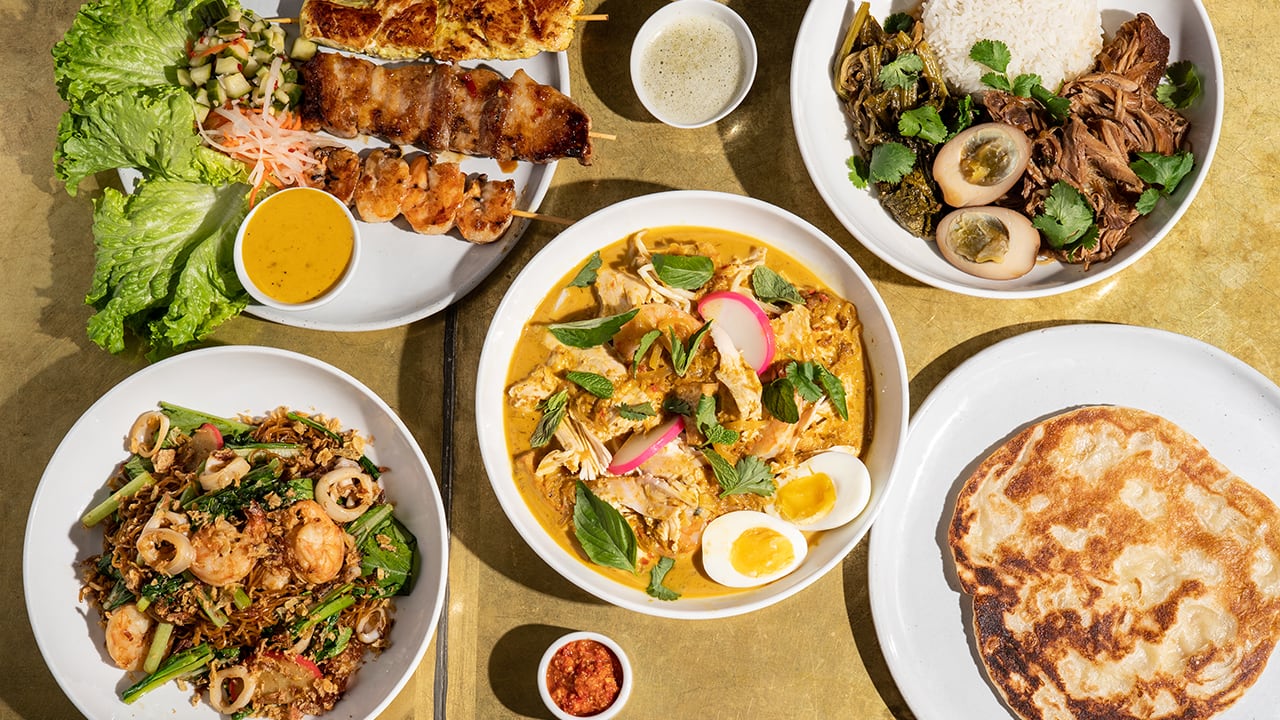Nostalgia messes with your mind. Bygone days grow all warm and fuzzy. Love was more passionate, music more melodious and, of course, the food was better.
It's tough to compete with a memory. But sometimes it's worth a try.
When word drifted out earlier this COVID-cursed winter that Ping restaurant was soon to be resurrected, decade-old memories came cascading back. It was 2009 and Andy Ricker was at the peak of his creative powers. John Jay, a revered Wieden+Kennedy executive, and his wife, Janet, were looking to revive Old Town, and Kurt Huffman was testing his mettle as the consummate restaurant dealmaker. It didn't hurt that Portland had become a national food media darling, enjoying one idiosyncratic success after another.
From this crucible came Portland's original "pan-Asian izakaya," as Huffman terms it. Writing in WW's 2011 Restaurant Guide, Aaron Mesh spoke for hardcore Ping fans: "It is blasphemy to suggest that any establishment surpasses Pok Pok for Asian cuisine, but I'll go ahead and say it: Andy Ricker's second restaurant, Ping, is more ambitious and even better than its older, more popular sister."
Though I don't fully subscribe to that sentiment, I understand it. At Pok Pok, Ricker produced a string of regional Thai food hits never before seen in American restaurants. But the breadth of his culinary mastery was never more in evidence than at Ping. I was dumbstruck to see dishes that might as well have come from Singapore hawker centers, Tokyo ramen shops, and street stalls in Taipei or Penang.
Related: Pok Pok Changed Portland. But Its Era Was Over Before the Pandemic Toppled the Thai Food Empire.
Grilled stuff on sticks was a particular pleasure at Ping: bacon-wrapped quail eggs with spicy mayo, simply salted chicken hearts, little pork meatballs, baby octopi dressed in a tongue-searing chile-lime sauce. There was also laksa, a Malaysian seafood noodle bowl, and bak kut teh, or "pork bone tea," a popular soup in Singapore and Malaysia. But the standout dish, which wasn't even on the original menu, was muu thawt. This was a hefty pork knuckle seared, braised and then dropped into the deep fryer before serving, accompanied to the table by tart pickled mustard greens, a sour-hot chile sauce and the boldly flavored braising liquid. It was a sight to behold and enough to feed three.
A sputtering economy, stubbornly awful location and financial split that took Ricker out of the equation left Ping in a precarious spot and forced its closure in 2012. Still, Huffman never lost his passion for the project. "It was too good to live such a short time," Huffman says now. Mike Kessler, a Ping kitchen hand in 2011 and its chef today similarly maintained a fiery affection for the bygone spot. He moved on to learn butchery, trained in the sushi trade, then spent years in the Toro Bravo orbit. "But I always wanted to get back to the Ping idea," Kessler says.
After the pandemic closed fine-dining restaurant Holdfast, Huffman and Kessler united to reprise Ping's glorious past in the now-empty space on Southeast 11th Avenue.
Recently opened on a pickup- and delivery-only model, the new Ping remains a work in progress. Several of the old dishes are available along with a handful of others. The laksa ($17) still wows: bits of chicken breast, slices of fish cake, clams, prawns and boiled egg join rice noodles in the mild curry coconut milk base pepped up with a bit of sambal. A delicious stewed duck leg ($16)—kuaytiaw pet pha lo, also from the original menu—is another high achiever. The leg is bathed in a dark, slightly sweet and aromatic braising liquid. The bowl also includes rice noodles, umami-rich shiitake mushrooms and pickled mustard greens. You can add a little fire with the same sour-hot chile sauce that came with the marvelous muu thawt. Hokkien mee ($14), popular in Singapore and throughout Southeast Asia, relies on thin round wheat noodles, shrimp and more in a broth flavored with soy, sesame oil and sambal.
Ping 2.0's biggest problem so far, Kessler acknowledges, is that many Ping favorites don't travel well, which explains the now-abbreviated menu. There are four skewers to sample: pork belly, shrimp, chicken satay and pork shoulder. These are, unfortunately, the kind of item that suffers most from the interval between fire and table. Kessler is adamant that he wants to re-create the entire original menu once circumstances permit.
Huffman says outdoor dining is slated for "once the weather is decent enough," and the move indoors whenever permitted and prudent. More PPP money could help smooth the path. In the meantime, Adam Robinson, bar manager at Deadshot, is slinging cocktails to go to align with Ping's food—a little galangal and pandan here, turmeric infusion or green chile liqueur there—while we wait to see how close this Ping comes to capturing the magic of the original.
ORDER: Ping, 2131 SE 11th Ave., 503-875-0527, pingportland.com. 11:30 am-8:30 pm Thursday-Tuesday. Available for pickup by phone or ordering directly from the website. Delivery by Caviar.
